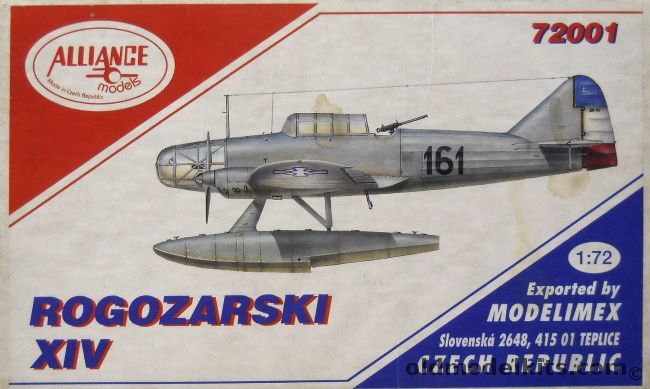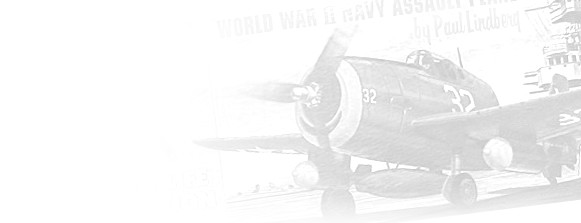
1/72 72001 Alliance Rogozarsky XIV - SIM-XIV-H Italy Regia Aeronautica 1942 / Yugoslav Naval Air Service - (SIMXIVH)
Resin Model Kit, Box Condition: Good
Very rare and the only kit of this subject. The model is beautifully cast in high-definition resin with a clear canopy, nose and all other glazing. The clear parts are in mint condition (perfectly clear and no yellowing). There is a paint guide and decals for both aircraft listed. Never started. The parts are still in the internal factory sealed bags and includes decals and instructions. From stormomagazine.com/modelarticles/ - The Rogožarski SIM-XIV-H was a twin-engined coastal reconnaissance floatplane and light bomber. The SIM-XIV-H was a low wing monoplane of mixed wood and metal construction, with an oval monocoque fuselage. The wing was braced to the fuselage by steel-tube struts - the tail planes also being braced. The front section had a glazed nose, with a gun turret armed with a single machine gun mounted above the nose. The pilot and radio operator/gunner sat in tandem under a long canopy, with the observer also armed with a single machine gun. The rear fuselage was fabric covered, while the moving tail surfaces were metal.The elliptical wing was of wooden-plywood construction. The plane was powered by two 240 hp (179 kW) Argus As 10C air-cooled V8 engines driving fixed two-bladed propellers. Two Alclad floats were attached to the engine nacelles and fuselage.The plane could carry one 100 kg bomb or two 50 kg for anti-ship/submarine duty. The plane also carried 12 fragmentation bombs 12 kg each for ground attack missions. The plane carried two machine guns one placed in the nose and was operated by the observer and the other in a rear gunner's cockpit.The prototype first flew in 1938 and demonstrated good handling characteristics and was ordered into production, although its performance was low. The first batch of six SIM-XIV-H, known as the Series O, differed from the prototype in having the turret removed from the nose and the tail section modified. The second batch of six aircraft, Series 1, had a cantilever wing, eliminating the bracing between the wing and the fuselage and was powered by two 270 (201kW) hp Argus As-10 engines driving two variable pitch metal propellers. A third batch of 12 aircraft was ordered in 1940, with 450 hp (336 kW) Argus As 410, but construction was interrupted by the German invasion of Yugoslavia in 1941. Plans for a landplane trainer adaptation of the SIM-XIV-H were also abandoned.SIM-XIV-Hs and SIM XIVB-Hs were deployed at the naval bases of Divulje (near Split) and Kumbor (Kotor). Before entering war the planes were used primarily for training activities. In April 1941 16 aircraft were available. These planes were used against German and Italian forces along the Adriatic coast, carrying out reconnaissance and mining operations. Five aircraft were destroyed during this period. Four aircraft attempted to escape to Greece, of which two were destroyed and two reached British bases in Egypt via Crete. These two aircraft were used for reconnaissance missions over the Mediterranean Sea until one was lost and the other scrapped due to a lack of spare parts. Italy seized eight aircraft, a SIM-XIV-H and seven SIM-XIVB-Hs. One plane was transferred to Guidonia in Rome for evaluation, where it showed better results than found in testing in Yugoslavia while the others were transferred to the training facility at Orbetello, being used for training and communications purposes until the end of 1942.
This item has been sold.
Click here to return to the main page.
